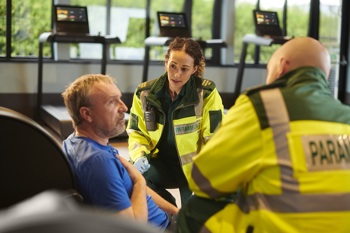
In 2024/25, only 57% of patients were seen within the four-hour A&E target, far below the 95% standard. Meanwhile, trolley waits of over 12 hours before admission have become a regular feature in many hospitals. Add to that the record elective backlog and under-resourced wards, and its clear acute care remains one of the NHS’s greatest pressure points.
The 10-Year Plan offers a vision of reform: more care delivered closer to home, a stronger focus on prevention, and a digital overhaul that slashes admin time and supports quick, informed decision-making and ways of working. But for A&E departments and acute hospitals, the delivery model - set to be published as a chapter by the government in the next couple of months - will be everything.
The Challenge of Delayed Discharge
One of the defining issues for acute trusts is the number of patients medically fit for discharge, but unable to leave hospital due to a lack of available community or social care.
In 2024, more than 13,000 people a day were stuck in hospital beds despite being fit to leave. These flow delays create a domino effect: emergency departments back up, trolley waits rise, and ambulances crews queue outside hospitals unable to hand patients over.
While the 10-Year Plan acknowledges this challenge, it has not quite outlined how it intends to link hospital reform directly to community and social care. So far, there has only been talk of investing in “neighbourhood hubs”, which will fall on urgent community response teams and discharge-to-assess models to smooth the flow through acute care and free up desperately needed beds.

Emergency Departments Taking the Brunt
Emergency departments (EDs) are one of the most overburdened services in the UK health and social care landscape. It’s the NHS’s biggest pressure point, and with 25 million (and counting) A&E visits recorded between 2024 and 2025, the strain is being felt among teams and the people attempting to get care.
To alleviate overcrowding in EDs and deter people from relying on emergency services as a route to treatment, the 10 Year Plan has proposed to implement the following measures:
- 40 new Same-Day Emergency Care and Urgent Treatment Centres designed to treat patients outside of A&E.
- 15 new mental health crisis assessment centres to prevent long waits for those in acute distress.
- Expanding technology-enabled care initiatives like Hospital at Home and virtual wards in order to support people with chronic, long-term conditions outside the hospital.
Of course, such efforts won’t eradicate this pressure immediately, but the long-term benefits i.e., reducing hospital admissions and freeing up emergency care to those who need it most, will make a significant difference.
Digital Solutions for Flow and Safety
One of the biggest game-changing initiatives for emergency services and ED in the 10 Year Plan is the scaling of technology and various digital tools, set to be implemented in the following ways:
- Visibility of bed capacity, admission numbers, and discharges via real-time, interoperable dashboards.
- Faster triage and smarter decision-making through clinical access to integrated care records and patient medical histories.
- Digital dictation and smart documentation tools aimed at reducing admin burden and minimising the risks of data leaks and losses by accurately logging vital data.
If utilised sufficiently, such tools won’t just free up precious time for clinicians, it will also enhance and make patient care safer whilst improving transfers of care between acute services, emergency teams, and community care.

Workforce Pressures and Wellbeing
Staff shortages are another major pain point crippling all areas of the health and social care sector. However, ED departments and acute services have report experiencing record numbers when it comes to staff burnout and absence due to sickness. While the NHS Long-Term Workforce Plan has pledged to bring in thousands more nurses and trainees in emergency medicine into the acute over the next 10 years, this does little to help with the immediate situation.
The good news is that hospitals have already begun utilising tools like smart rostering and analytical tools that can predict outcomes and aid in balancing and better managing staff shifts, patient flow, reducing burnout rates. In addition, wellbeing initiatives and multi-disciplinary team models are also being prioritised to retain staff and ease the relentless pressure on A&E teams.
How Will the Plan Pan Out for the Acute?
Emergency and acute services have been underlined as a top priority within the 10 Year Plan, but fixing them are only a small part of the bigger puzzle, and reform will need to extend into community care and beyond if we are to tackle delayed discharges, the treatment backlog, and the increasing waiting times in A&E.
We simply cannot wait to take action here, and certainly not until the proposed reforms in 2028. Patients and staff need to see improvements now if we are to bring the numbers down and prevent the current states of affairs from escalating into something much more difficult to rectify later down the line.
If the plan’s promises on prevention, digital integration, and workforce support are delivered, the NHS could finally move acute and emergency services from constantly firefighting to providing sustainable, high-quality, patient-centred care.

 AU & NZ
AU & NZ
 SG
SG
 MY
MY
 US
US
 IE
IE

